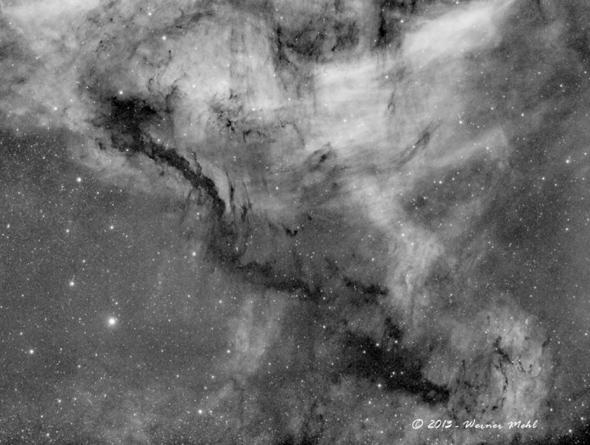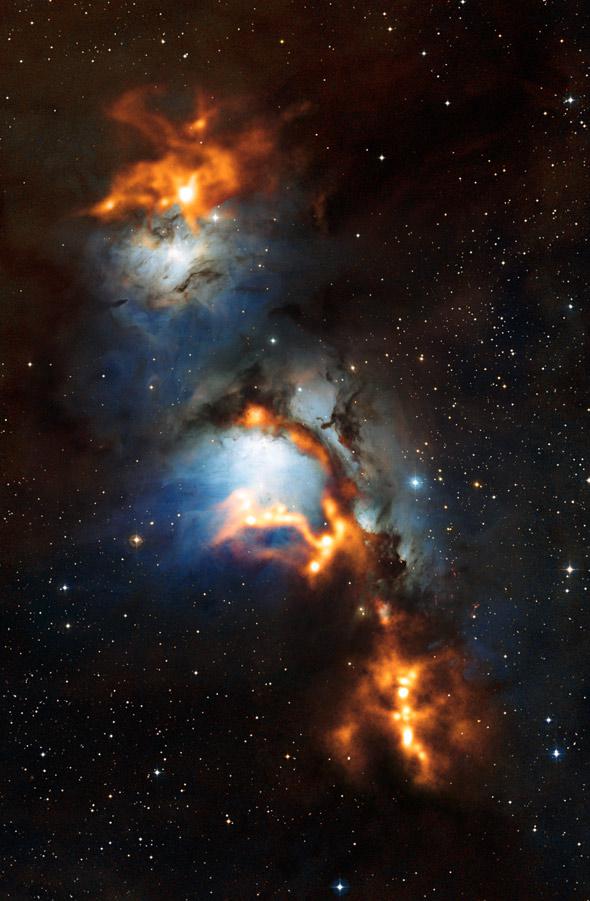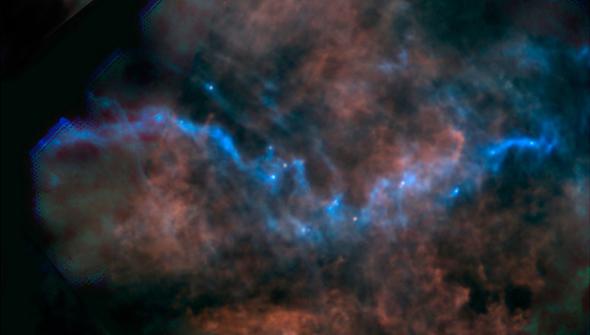The Universe lights up when you look at it with different eyes. And, in a very real sense, I mean that literally.
Our galaxy, the Milky Way, is more than just a few hundred billion stars. It’s also loaded with gas and dust, the raw materials from which stars are made. And stars are being made: roughly two to four times the Sun’s mass worth of stars are born every year in our galaxy. Usually that means lots of little stars like red dwarfs, but sometimes it means a truly massive star dozens of times heftier than the Sun. But on average, a handful are born every year.
They form in nebulae, clouds of gas and dust, under a variety of circumstances. There are huge cold clouds of dust out there called molecular clouds, and these are key sites of star birth. They can have regions inside them, knots or clumps they’re usually called, where the density of material is pretty high, big enough that gravity is a player. This material can draw itself together, and stars condense out of the resulting collapse.
That material has to be cold, or else its internal heat can prevent the collapse. So, ironically, one of the best places to look for stars about to be born is inside the coldest places in the galaxy.
The image above shows one such place: a ribbon of brutally cold dust and gas, only about 15°C above absolute zero! The image was taken by the ESA Herschel observatory, which is sensitive to light in the far infrared, way way outside what our eyes can see. This sort of light is emitted by very cold objects, such as clouds undergoing collapse.
The ribbon of material, called LDN 914 (or G82.65-2.00 depending on what astronomical catalog you like) is about 50 light-years long and has about 800 times the mass of the Sun in total, plenty of raw material to make stars. Come back in a few million years, and this will look quite different, lit up by the fierce intensity of dozens of newborn stars.
When I saw this image I thought it looked familiar. It turns out I was mistaken; I was thinking of a different ribbon of star-forming nebula I wrote about back in 2013. But that got me wondering what this object looked like in visible light. I had a suspicion I knew, but I wanted to make sure.
I dug around the ‘net but didn’t find anything at first. Then, on an astronomy forum for astrophotographers, I saw a post by Werner Mehl. He had taken a very deep exposure of the sky in the constellation of Cygnus, and in his shot was a ribbon of dark material he was having difficulty identifying. Here’s his photo:

Werner Mehl, used by permission
Gorgeous, isn’t it? I grabbed his picture, rotated and resized it, and bingo! It’s a perfect match to LDN 914. I contacted Mehl to ask his permission to use it, and also let him know the name of his find (if you’re curious, LDN stands for Lynds Dark Nebulae, a catalog of such objects first published in 1962).
But perhaps you’ve noticed something weird: In Mehl’s photo, LDN 914 is dark, but in the Herschel image it’s bright. What’s going on?
In visible light, that cold dust is extremely opaque. It’s very efficient at blocking light from the stars behind it, and so Mehl’s image shows it as black, with very few stars in it (those are certainly foreground stars, closer to us than the nebula and so unblocked by it).
But anything above a temperature of absolute zero emits light, and what kind of light depends mostly on its temperature. The Sun is very hot and glows in visible light. A red dwarf is cooler and emits mostly red or infrared light. Cold dust clouds glow in the far infrared, where Herschel can see them.
And that’s what I meant at the top of this post. When you look at the Universe with different eyes, it literally lights up.
My favorite examples of this are when visible and far infrared images are overlaid; you can really see how something dark in visible light glows brilliantly in longer wavelengths. The best ones I’ve seen are the Cat’s Paw Nebula, IC 5156, and this, M78 in Orion:

ESO/APEX (MPIfR/ESO/OSO)/T. Stanke et al./Igor Chekalin/Digitized Sky Survey 2
The blue part of the image is visible light and has very dark dust lanes running through it. The orange is from APEX, which sees light with submillimeter wavelengths, where cold dust glows. I love how they fit together like puzzle pieces. Amazing. And truly lovely.
See how beautiful something can be when you widen your perspective a little bit? If there’s a life lesson there, feel free to take it.
Post script: And oh yes, the reason LDN 914 looked familiar to me? I was able to crack that one pretty easily.
